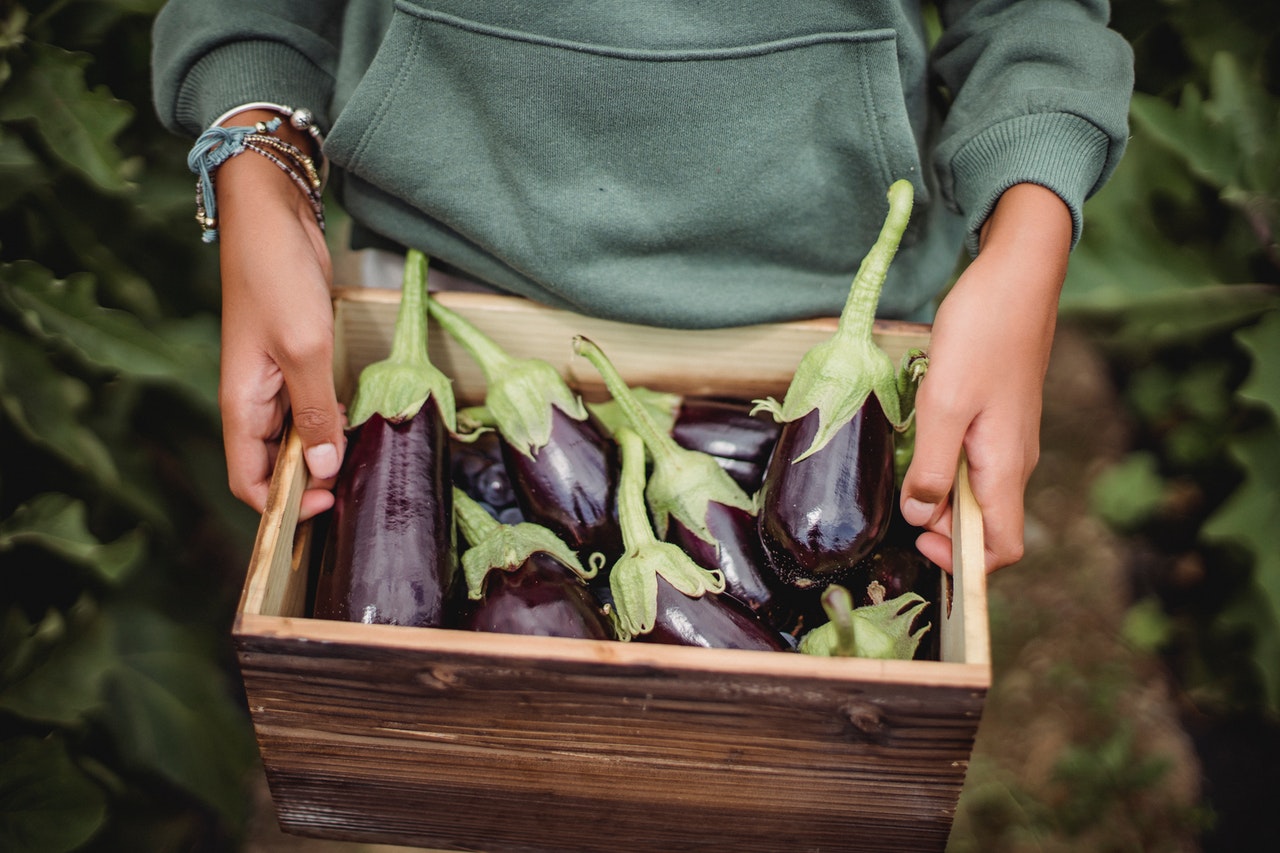The harvesting of eggplants is done multiple times, typically every 5 to 10 days depending on weather conditions.
Eggplants are harvested at technological maturity when the fruits reach a specific size, color, and shine. At this stage, the seeds are soft and white (they become hard and brown at physiological maturity), and the flesh is firm. The fruits are cut with scissors, leaving a stem length of about 2 cm. Harvesting usually begins 60 to 70 days after planting and is initially done every 7-10 days, then every 4-5 days as the season progresses. Fruits are picked when they display the characteristic signs of maturity for the cultivated variety: shape, size, color, and shine. Harvesting should be done with a sharp knife, never by hand pulling. Each eggplant plant can yield 8-12 well-developed fruits, with a yield of 2.5 to 6 kg per square meter, and sometimes even up to 12 kg. At room temperature, the fruits can be stored well for 5-7 days, and at a temperature of 5°C, they can last for several weeks.
Eggplant Yield
Hybrids yield 30 – 40% more, especially in early harvests, where they can yield 70 – 100% more than traditional varieties, such as KLASIK F1.
To achieve a high yield, eggplants need to be harvested frequently, every 10 – 15 days. The fruits are smaller, but the overall yield is higher. Harvesting begins 120 – 150 days from germination, and for seed production, it matures in 140 – 150 days. Harvesting is done with scissors or a knife, as the stems have thorns.













































